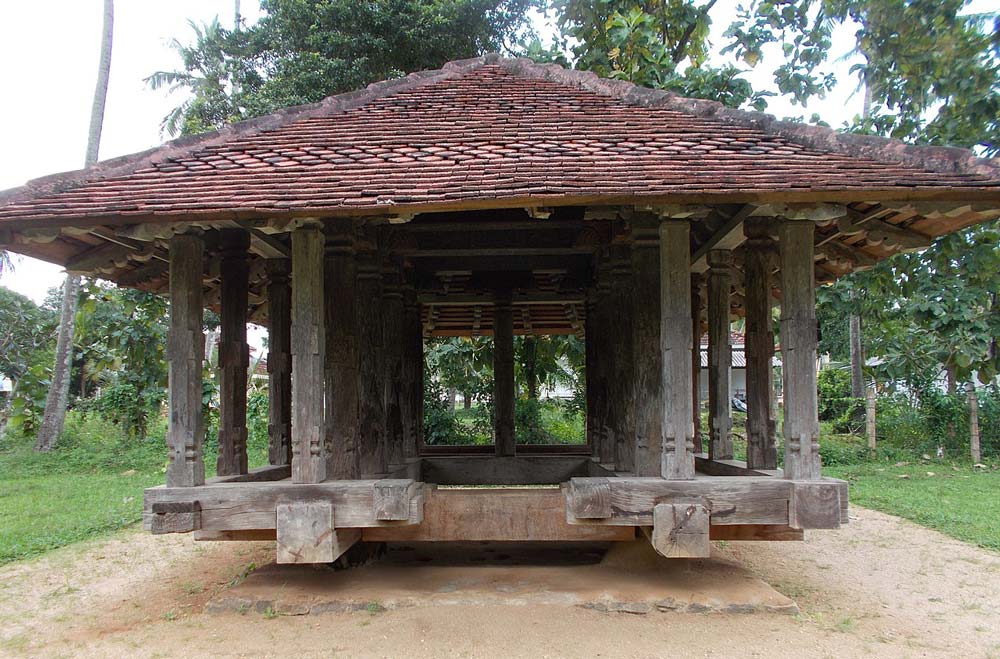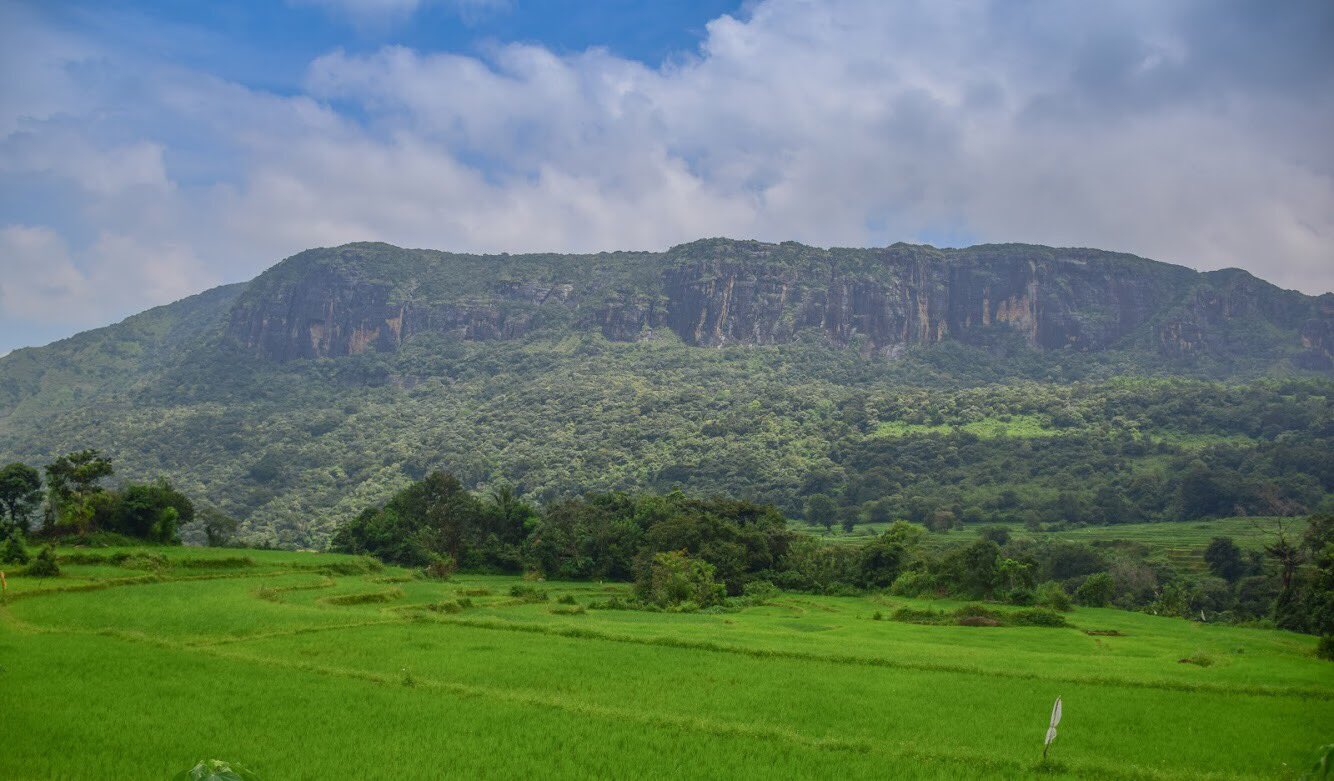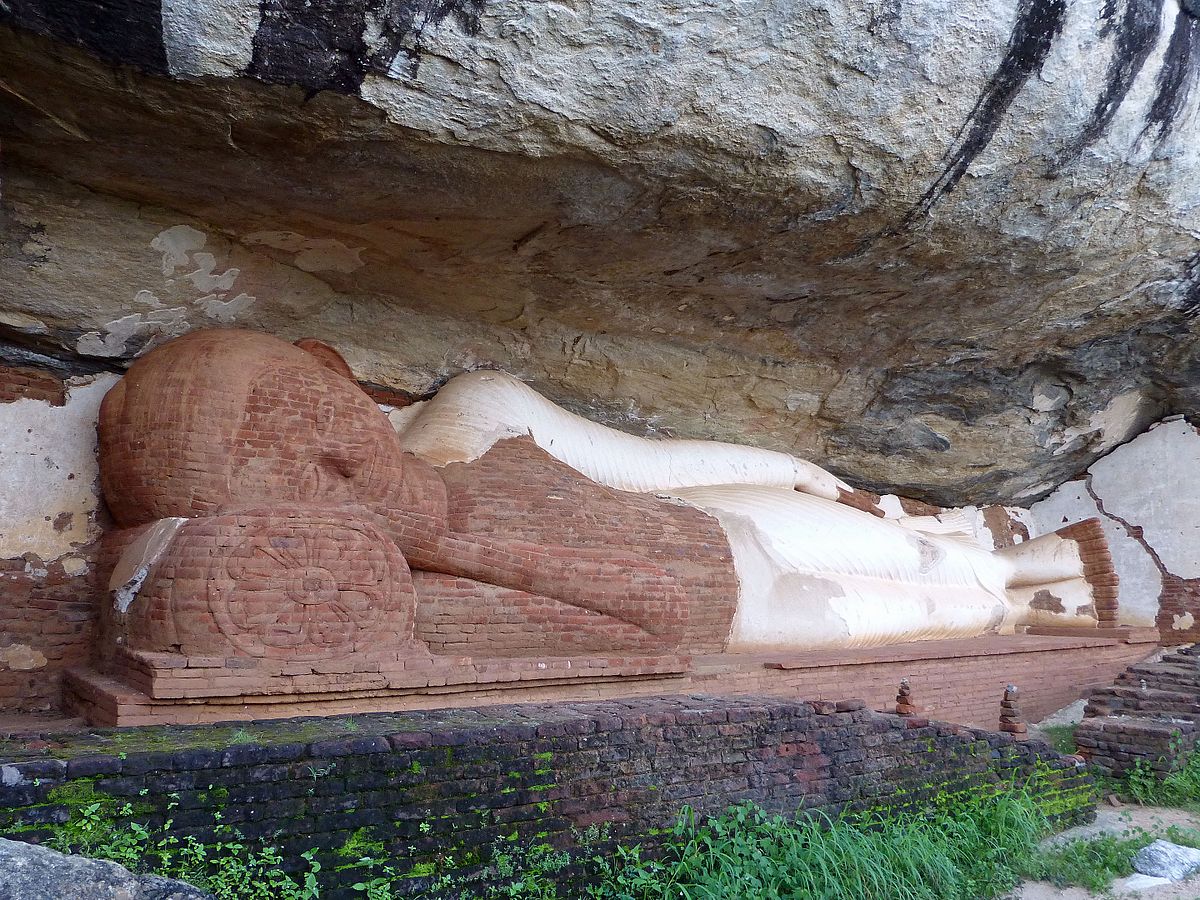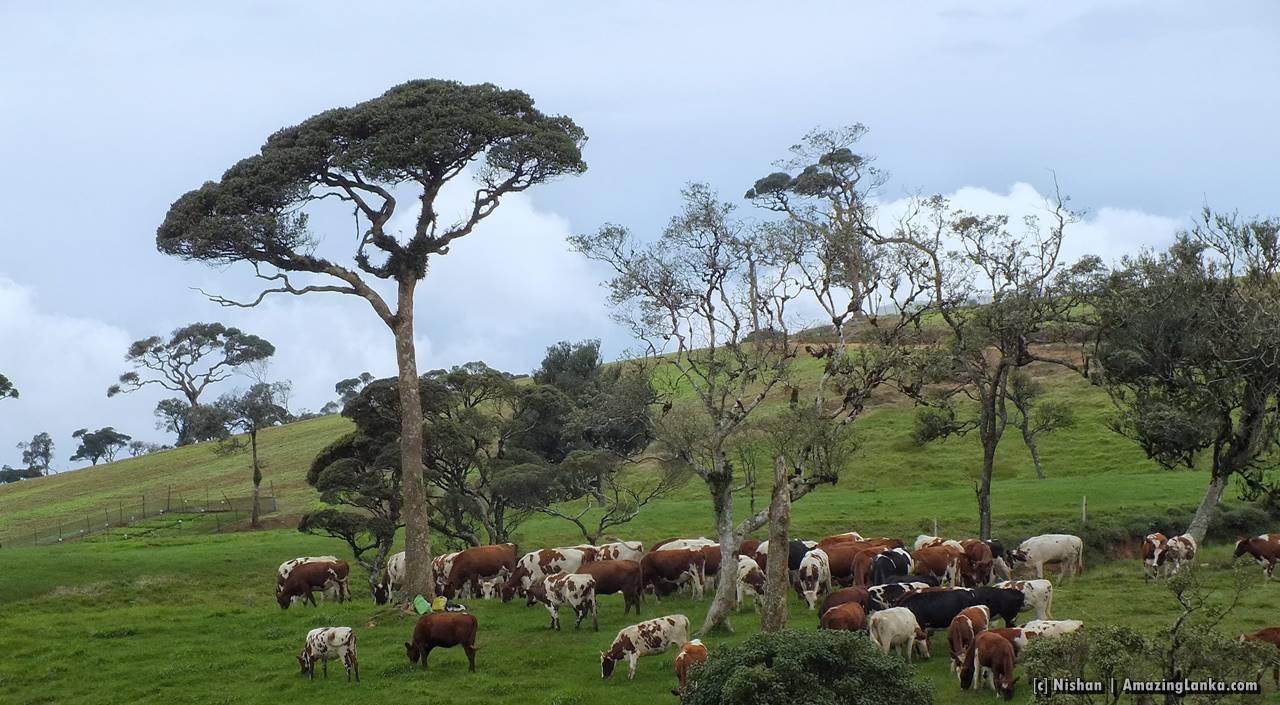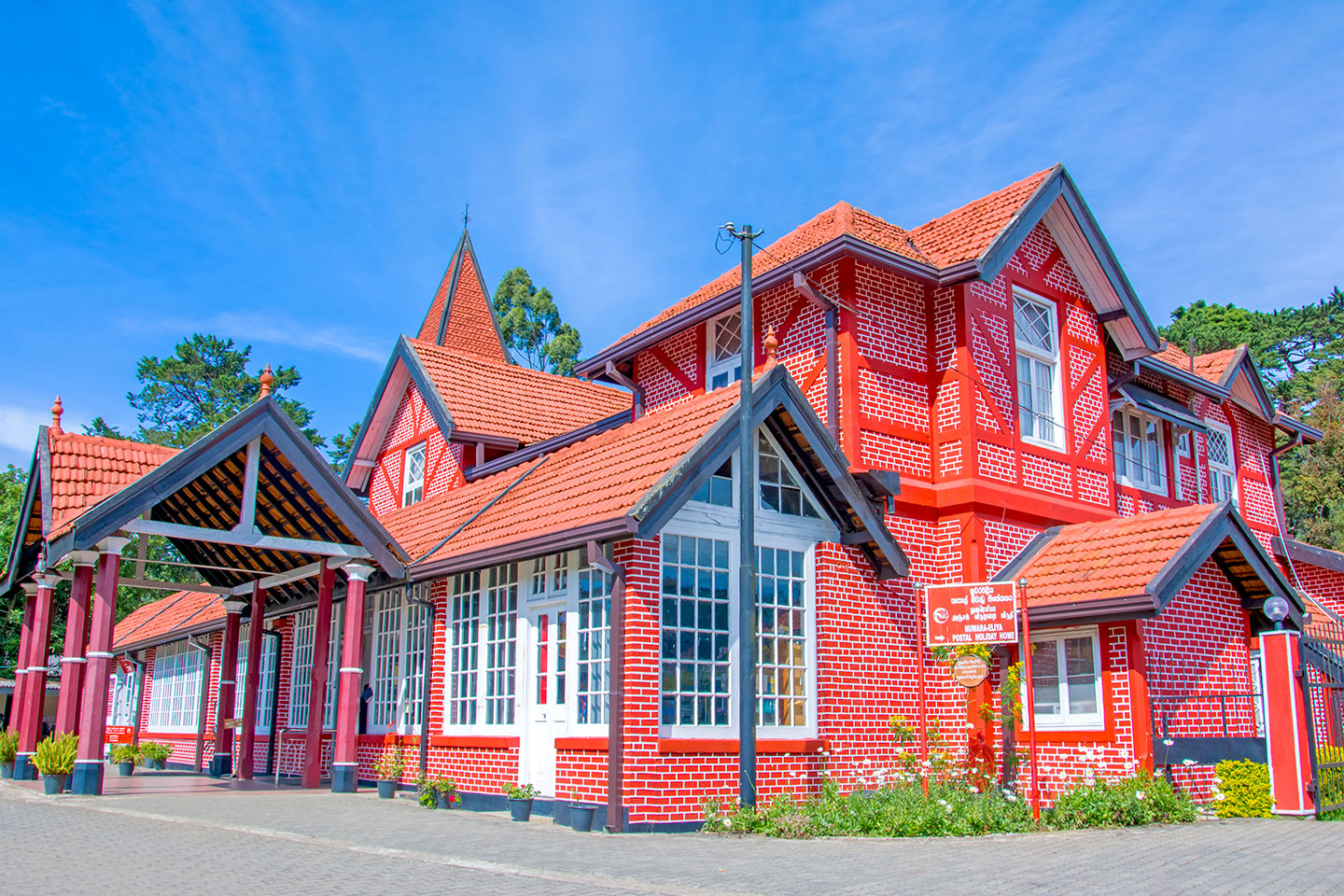The Dalada Maligawa a place by its own definition - Centrally located in Kandy town is surrounded by a breath taking atmosphere and picturesque, panoramic viewpoint. On the right side is the Unawatune Forest reserve and the great historical Kandy Lake towards the east. The great Tooth Relic of Lord Buddha is considered as the living God by many Buddhists and a vast majority of mankind whose faith and honour lies with him.
In 4th century AD (301-328) during the era of King Kithsiri Mevan – the tooth relic was brought from the city of Kalinga by Prince Dantha and Princess Hemamala and made to rest by King Kithsiri Mevan at Vihara Dhammachakra in a central location in town. This created a great change in Sri Lanka with the inception of the Dalada Maligawa. It was from this instance the Tooth Relic was made a symbol of royalty and all Kings made every effort towards honouring Buddhism and safekeeping it amidst all obstructions.
Later during the years due to the invasion from unforeseen enemies which took place from time to time, the need of transferring the relic arose. From Anurahapura, Polonnaruwa and from Dambadeniya and later to the Kingdom of Yapahuwa. Conquering all barriers the Dalada Maligawa was closely located to the King’s own palace providing utmost security and honour in every respect.
It was evident that our history lies not alongside a straight line but angled more curved towards the eastern side due to change of locations needed to be made towards its protection and utmost safekeeping.
In 1603 Portuguese made a fierce invasion and destroyed the Dalada Maligawa and during which the tooth relic was taken towards Meda Nuwara for its safekeeping. Later King Rajasinghe III, son of King Senerath rebuilt what was destroyed by the Portuguese and reconstructed it to a two-story Dalada Palace in which the tooth relic was laid. Later during the year 1687 King Wimaladharmasuriya II built a 3-storied building towards which a golden casket of 9 gems was offered by him towards the Dalada Samindu.
It was evident that in 1707 King Narendrasinghe (son of King Wimaladharmasuriya) who reigned then renovated the building for the safekeeping of the Tooth Relic.
It was also an apparent factor that in each of these eras there had been a Dalada Maligawa built according to its inheritance and its own specifications.
Also it was believed that the first Dalada Maligawa that was built where the present one exists was constructed by the first king of Kandy – King Wimaladharmasuriya I. Furthermore it was soon after the victory following a fierce battle, with the Portuguese at Danturai the Tooth Relic was hidden at Ratnapura, Delgamuwa inside a ‘kurakkan’ stone and brought forth towards the city of Senkadagala. This was deposited in a 2-storied palace closely located to the King’s own palace between 1593-95.
The Dalada Palace was initially built by his father and the Jathaka Katha were drawn on the walls.
The palace by the name of Paithirippuwa was constructed by the last King of Sri Lanka Sri Wickrema Rajasinghe in front of the 2-story building. It is believe that the Dalada Palace building was constructed according to conventional wattle and daub with the usage of kitul plates which was evident through the historical evidence.
Furthermore, above the Dalada Maligawa that exists at present, a golden roof was made along with a golden fence around the (maluwa) compound by President R. Premadasa in 1987. Also the 2nd floor of the recent Dalada Palace where the tooth relic is deposited towards the opposite side is an oblong shaped hall known as Kawakara Maduwa.
It is apparent that several escort buildings were bounded to Dalada Maligawa and were located within the complex of the palace which is Hewamandapaya, Palle Viharaya or Palingu Pilimaya (crystal statue) and huts for bhikkus under the Dalada theme. It is also believed that the present Dalada museum known as Aluth Maligawa was constructed during the era of the Diyawardena Nilame P.B. Nugawela. What consists of an office for the Diyawardena Nilame, a small chaitiya, stores and a kitchen which was built during the era of Dunuwila Diyawardena Nilame in 1663.
Also towards the opposite side of the Dalada Palace is where the Pathirippuwa is located in which lies the library area. Also close to the entrance of the palace is where the ‘Ethulweeny Doratuwa’ is marked and seen in the Palace.
Pathirippuwa
Among the escort buildings of Dalada Palace, the prestigious Pathirippuwa was constructed for the purpose of visiting the citizens who arrive at the Mahamaluwa and also for the purpose of watching the Dalada Perahera. The Pathirippuwa was constructed by the last King of Sri Lanka Sri Wickrema Rajasinghe in 1811. The word ‘Pathirippuwa’ means ‘the palace of view’ (bala sitana thena) as the Sinhala term (Path thu Iruppu) it is believed. It is of a highly exceptional octagonal shape and affords a picturesque view of the city opposite to the Dalada Palace and with views to the right side of the entrance close to the water pool.
At present the Pathirippuwa is used for the storage of artefacts and for library purposes. Also it was used as the leisure room of the King. Valuable books of Ola leaves were deposited here. Currently the Pathirippuwa is used as the symbol of the Dalada Maligawa.
Magul Maduwa
Magul Maduwa is considered a highly exceptional architectural creation of upcountry and also a historical monument and furthermore as an honourable pavilion where judicial decisions were made during the Kandy era. It is located between the Dalada Maligawa and the ancient king’s palace that lies at 58 ft in length and 356 ft width towards which the measures of specifications differed due to changes of locality trying to avoid enemy invasions.
It is quite evident that it a modern creation of exceptional standard which was created by King Rajadhi Rajasinghe in 1758. It rests on 24 pillars on each side and 48 on both sides, this solemn construction predominates the rest due to its exceptional carvings at the peak of its pillars which elaborately brings forth the architectural aspects of upcountry creations that lies within.
‘Pethi Ulu’ has been greatly valued over the years even during recent times as it shows specific designs of the roofing styles of Sri Lankan traditions. It also showcases the credibility and reputation of such work of art created by upcountry architects.
In 1948 when Sri Lanka won independence from the British it was evidently believed that the Independence Square that was built in Colombo 7 as a symbol of national independence was somewhat a replica of the historical Magul Maduwa.
Hailing from eras of King Rajadhi Rajasinghe, the historical Magul Maduwa is the King’s council where the decision making of the country was being made by Prime Ministers and other Ministries. Also all judicial decisions were handed over to the King here, and it was thus considered as the Supreme Court and was also known as the Mahamaduwa.
Due to its great splendour and elegance, most royal functions were held at the Magul maduwa. In 1815, the Udarata bond was also signed here and after the insurrection in 1817 and 1818, the decision making of the death penalties which were handed down to Sinhala heroic leaders like Keppitipola and Mudugalle also took place at the Magul Maduwa. In later years, functions to welcome the Prince of Wales were also held here. Moreover, the building was considered the Supreme Court during the British rule, until the new court building was constructed.
After receiving independence from British ruling, functions of high standards involving the Royal leader were held here – especially the Asgiri – Malwatte (both sections) and credential award ceremonies of mahanayakes were also held at the building.
The Mahawesala which narrates the meaning of the word ‘where the King resides’ was known similarly during the Polonnaruwa era. This palace lies north of the Dalada Maligawa and is built in an oblong shape (in 1592-1604) when the era of Kandy was initiated by King Wimaladharmasuriya.
Ulpange (Biso Maligawa) :
From east side of the aluth maligawa and west side of the new museum of the Dalada Palace the building with low roofing is considered the Biso Maligawa. The lower section is known as the palle wahala and was the location of the king’s harem.
Biso Maligawa was closely located to Maliban Street where most of the last King’s relatives resided. Ulpange is built on the border of the Kandy Lake by King Sri Wickrema Rajasinghe in 1806 for bathing purposes of his wives, and is a 2-storied construction, with architectural aspects belonging to the Kandyan era. The upper floor was made for changing of clothes and the ground floor for bathing, swimming and water play. The upper floor buildings are currently being used as the Police Security office of the Dalada Maligawa.
Mahamaluwa:
This is close to the water pool on the opposite side of the Dalada Maligawa and is visible as an open greenery of square shape that runs forth towards D.S. Senanayake Veediya. It is an esplanade, known as a place of gathering when the king arrives at the Pathirippuwa and also where high officials and bhikkus gather to witness the Perahera and host other functions and even used as a place of worship where offerings towards the tooth relic were made.
In 1828 during the British rule, the country was at a diverged stage due to the non-holding of the perahera for a period of ten years. The British Governors then decided as a way of listening to appeals of the Kandyan high officials and Mahasangaratnes, brought forth the Dalada Wahansa and also a pavilion for the Maha Sangayawahansa was built (of an extent of 229 ft in length and 60 ft in width) as noted in historical records.
At present the Mahamaluwa is considered to be a most peaceful place ideally suited for devotees on pilgrimage offering homage and visiting the Dalada Palace. But it is also known as a monument where the skull of Weerakeppitipola Nilame is deposited and the a statues of Weera Maduma Bandara together with statues of Prince Danuthe and Princess Hemamala, which was built by President R Premadasa.
Kandy Dalada Perahera:
The Dalada Perahera is one of the most renowned traditions which attracts worldwide attention and takes place each year during the month of Esala (July/Aug). There are four main events which are held annually by the Dalada Palace which are as follows:
Aluth Sahal Mangalya in January, Sinhala Avuruddha in April, Dalada Perahera in July Karthi Feast in October are the four events that received Royal patronage and the King paid courtesy calls to the citizens during these times.
The word ‘perahera’ is derived from the Pali and Sanskrit languages which means ‘walking together’ paviharaya dekweema, protection (araksha kereema), paying respects (gauruwa kereema). Hoever, today according to Sri Lankan specifications the word ‘perahera’ eventually reminds us of the Kandy Sri Dalada Perahera.
Throughout the perahera history, the Kandy Esala Perahera was a procession held of an era more organised and of orderly manner and it was evident that during the Anuradhapura era (4th century AD) during the reign of King Kithsirimevan, from the inception of the tooth relic in Sri Lanka that the Dalada Perahera was celebrated in grand style as a Royal function.
The Dalada Perahera was a highly noble state event during the Anuradhapura era and moved towards being a more religious event during the Polonnaruwa era.
The Mahawansa records that in AD 1153-1186 King Parakramabahu I made the traditional offering towards the tooth relic and the Pathra Satum Wahanse, in a very elegant manner and the King himself rode on a white elephant close behind the Dalada Karanduwa during the procession. Soon after the Polonnaruwa era the tooth relic was brought to Dambadeniya for security reasons during which time both the pathra datuwa and dalada wahanse were taken adorned in procession and soon afterwards taken to Yahapahuwa for safekeeping. During this time there was no sign of a perahera being held.
During the Kurunegala era there was a certain amount of rules and regulations to be adhered to regarding the perahera and during this time the powers of the bhikkus were more. From this point the Dalada Maligawa was brought to Gampaha and thereafter to the Kotte Kingdom and here utmost care was taken and virtuous traditions were made accordingly with great respect and honour towards the Tooth Relic. In 1593, it was evident that Wimaladharmasuriya Narendran built a palace close to his palace with many beautiful aspects and made the tooth relic to rest; which was later adorned in the procession during the month of Esala yet preceded only as a godly procession instead of a perahera as stated in the Mahawansa.
It was also stated that complete details of the offerings made and homage and of traditions towards Dalada and all other processions which took place later clearly stated from the beginning of the era of King Kirthi Sri Rajasinghe. It is clearly evident that the initiation of the present procession was an impact of Upali Himipanau who brought forth Upasampadava (higher ordination) to Sri Lanka, who advised on making the perahera of esala, a procession which includes a Buddha pooja of the tooth relic instead of a procession towards the God.
There are a few factors involved in discussions of the consistency of the Dalada Perahera the time it is was held; the artistes and the villagers and with more emphasis on the participation of the villagers in the procession. However, over time new aspects had been added.
- King of his own kingdom in procession and paying homage to the people for the second time during the year.
- Creation of an opportunity for the commoners to witness the King’s glory and loyalty to the kingdom and also parading of countrymen and government agents under the King’s direct rule in the procession
- Showcasing the victories of the Sinhala kingdom against the foreign invasions and instilling of courage, patriotic feeling and of sovereignty of Kings.
- Annual Esala offerings made to Buddha for rain for agricultural purposes
- Festival held in order to commemorate the soora-Asoora battle victory and the war heroes
The Esala perahera begins soon after the new Kandy Vishnu devale procession ends and after the planting of Kapa trees at the Kandy Sathara Devalaya and after seven days of observing religious traditions the Kumbal procession begins and as soon as it ends the internal procession of the palace begins and five days afterwards the Randoli perahera begins. In terms of consistency the Randoli perahera evidently proves this process. Accordingly, the Kandy Dalada Perahera is the main historical event of Sri Lanka of whatever national, religion or faith. This has been bestowed to us by our ancient folks and will be adorned in procession continuing in the future with much honour and integrity.






